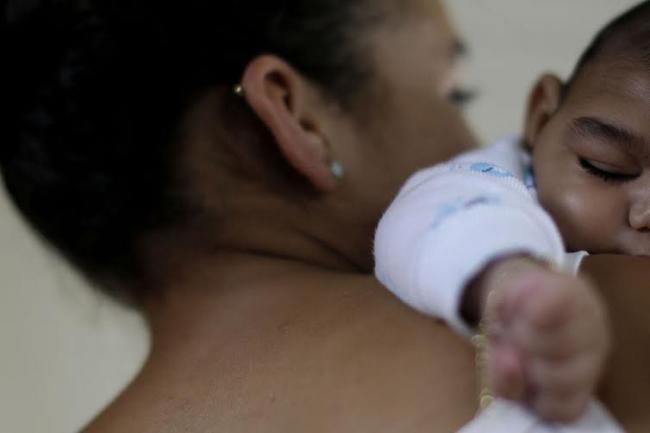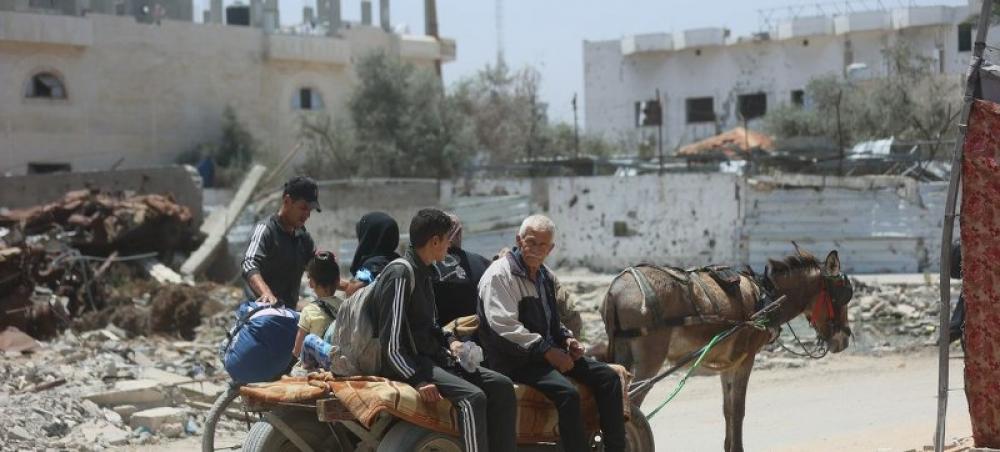Just Earth News 23 Mar 2016, 10:41 am Print

UNICEF/UN011574/Ueslei Marcelino
Updating the press on developments in science regarding the virus, the World Health Organization (WHO) Director-General, Margaret Chan, said the knowledge base is building very rapidly, and thanked all countries and their scientists who have worked to help build up the evidence base.
Zika circulating on 38 countries and territories
“The virus is currently circulating in 38 countries and territories,” she told reporters. “On present knowledge, no one can predict whether the virus will spread to other parts of the world and cause a similar pattern of fetal malformations and neurological disorders. If this pattern is confirmed beyond Latin America and the Caribbean, the world will face a severe public health crisis.”
According to WHO, the world was alerted to the first appearance of Zika in the Western Hemisphere on 7 May 2015, when Brazil confirmed that a “mysterious outbreak” of thousands of cases of mild disease with rash was caused by the Zika virus. In July, the country then reported an increase in cases of Guillain-Barré syndrome (GBS), followed by an unusual increase in microcephaly among newborns in late October.
“The possibility that a mosquito bite could be linked to severe fetal malformations alarmed the public and astonished scientists,” Dr. Chan said. “The association with Guillain-Barré syndrome and other severe disorders of the central nervous system has expanded the risk group well beyond women of child-bearing age. We now know that sexual transmission of the virus occurs.”
She detailed how a pattern has emerged in which initial detection of virus circulation is followed, within about three weeks, by an unusual increase in cases of GBS. Detection of microcephaly and other fetal malformations comes later, as pregnancies of infected women come to term.
In the current outbreak, Brazil and Panama have reported microcephaly. Colombia is investigating several cases of microcephaly for a possible link to Zika. In other countries and territories, the virus has not been circulating long enough for pregnancies to come to term. A WHO team is currently in Cabo Verde to investigate the country's first reported case of microcephaly.
“To date, 12 countries and territories have now reported an increased incidence of Guillain-Barré syndrome or laboratory confirmation of Zika infection among GBS cases.
Additional effects on the central nervous system have been documented, notably inflammation of the spinal cord and inflammation of the brain and its membranes,” Dr. Chan further reported.
WHO's response to the outbreak
Since 1 February, WHO has convened seven international meetings and published 15 documents that translate the latest research into interim practical guidance to support countries as they respond to this outbreak and its neurological complications.
Over the past two weeks, WHO convened three high-level meetings to look at the science, the convention and new tools for mosquito control, and what is known about the management of complications, including microcephaly and GBS.
“These meetings help answer pressing scientific questions and gather advice on the best ways to respond to a situation that is rapidly evolving,” Dr. Chan underlined, noting that there is now scientific consensus that Zika virus is implicated in the neurological disorders.
“The kind of urgent action called for by this public health emergency should not wait for definitive proof,” she insisted.
Diagnostic test is 'most urgent priority'
In terms of new medical products, the experts agreed that a reliable, point-of-care diagnostic test is the most urgent priority. At present, WHO says more than 30 companies are working on, or have developed, potential new diagnostic tests. For vaccines, 23 projects are being worked on by 14 vaccine developers in the United States, France, Brazil, India, and Austria.
WHO estimates that at least some of the projects will move into clinical trials before the end of this year, but several years may be needed before a fully tested and licensed vaccine is ready for use.
Meanwhile, during a meeting on mosquito control, the experts concluded that well-implemented control programmes using existing tools and strategies are effective in reducing the transmission of Aedes-borne diseases, including Zika. However, they also identified a number or challenges in implementing these tools, and none of the five was judged ready for full-scale implementation.
Finally, the third meeting looked at the management of complications, including fetal malformations and neurological disorders, and the heavy burden this places on health syste
- WHO alerts flavoured nicotine products driving youth addiction
- UN study reveals alcohol consumption is linked to higher risk of pancreatic cancer
- Even few nights of insufficient sleep can affect heart problems, reveals study
- New study says waist-to-height ratio predicts heart failure incidence
- Life expectancy worldwide fell by 1.8 years between 2019 to 2022: WHO






